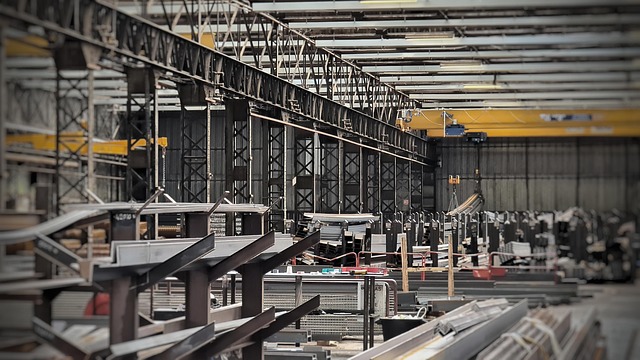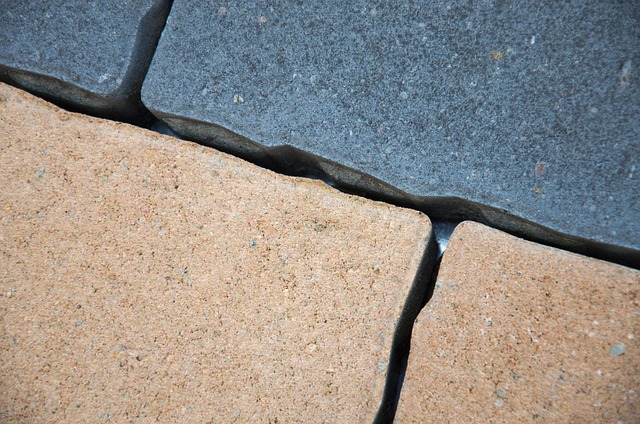Glue Laminated Beams (GLulams) are eco-friendly structural wood products made by gluing layers of lumber. They offer enhanced strength, local sourcing, and waste reduction compared to traditional beams. GLulams' sustainable manufacturing process and superior load capacity make them a game-changer for green building projects, with benefits available at unalam.com.
“Discover the power of locally sourced, glue laminated timber (GLT) for sustainable construction projects. This innovative material, also known as what is a glue laminated beam, offers an eco-friendly alternative to traditional lumber. In this comprehensive guide, we explore the benefits of choosing GLT, from reducing your project’s carbon footprint to ensuring high-quality, locally sourced materials. Learn how glue lamination minimizes environmental impact and discover its versatility in eco-conscious design.”
- Understanding Glue Laminated Beams: A Sustainable Choice
- Benefits of Buying Local: Reducing Carbon Footprint
- Sourcing Quality Timber: Key Considerations
- The Environmental Impact of Glue Lamination
- Incorporating GLT in Eco-Friendly Project Designs
Understanding Glue Laminated Beams: A Sustainable Choice

Glue laminated beams, also known as glulam beams, are engineered wood products created by gluing together several layers of dimension lumber. This innovative construction method produces strong and durable structural elements that are an eco-friendly alternative to conventional wood beams. By using locally sourced timber and adhering to strict environmental standards, glulam beams offer a sustainable solution for various building projects.
Understanding the manufacturing process behind glulam beams highlights their advantages in both strength and sustainability. The latest glulam manufacturing trends emphasize efficient production methods and innovative design, ensuring structural integrity while minimizing waste. Unlike conventional wood beams, which may involve extensive transportation, glulam beams can be locally produced and installed, reducing the carbon footprint associated with construction materials. To learn more about this sustainable choice, visit us at unalam.com and explore the benefits of glulam beam installation guidelines for your next project.
Benefits of Buying Local: Reducing Carbon Footprint

Buying locally sourced glue laminated timber for your sustainable projects comes with a significant advantage: reducing your carbon footprint. What is a Glue Laminated Beam, you ask? It’s a structural product made by gluing together several layers of wood to create a strong, solid beam. This process, known as glulam, offers an eco-friendly alternative to traditional building materials, especially when sourced locally.
By opting for locally produced glue laminated timber, you’re supporting regional economies and minimizing the environmental impact associated with long-distance transportation. Unlike other structural materials, glulam has a lower carbon footprint due to its renewable nature and efficient manufacturing process. A direct comparison of glulam cost with other materials reveals competitive pricing, while what makes glue laminated beams superior lies in their exceptional strength and load capacity, making them ideal for various construction needs. Discover more about these benefits and explore our options at unalam.com.
Sourcing Quality Timber: Key Considerations

When sourcing timber for sustainable construction projects, prioritizing quality and sustainability goes hand in hand. One superior option is buying glue laminated timber, specifically designed to enhance structural integrity. What is a Glue Laminated Beam? These beams are engineered by bonding together multiple smaller pieces of wood with strong adhesives, creating a single, robust structural element. This process not only strengthens the material but also utilizes various wood species, promoting sustainable forestry practices.
Choosing the right supplier is crucial for ensuring top-quality glue laminated timber. Look for reputable brands that prioritize environmental stewardship. For instance, visiting unalam.com can offer insights into their commitment to sustainability and the structural advantages of their products. Key considerations include checking the source of wood, verification of sustainable harvesting practices, and examining the lamination process to confirm it meets industry standards, ensuring you get a product with superior structural integrity for your projects.
The Environmental Impact of Glue Lamination

Glue lamination is a sustainable and innovative process that transforms multiple layers of thin timber into strong, durable glue laminated beams. This technique, also known as Glulam (glue-laminated timber), offers an eco-friendly alternative to conventional building materials. By binding timber layers with powerful adhesives, glulam beams create a high-strength structural element, making them ideal for various sustainable construction projects.
One of the most significant environmental advantages is the reduced impact on natural resources. Unlike solid timber, which is cut from trees, glulam uses smaller pieces of wood that might otherwise be considered waste. This process conserves forest resources and promotes a more circular economy. Furthermore, glulam beams have an excellent load-bearing capacity, ensuring structural integrity while minimizing material requirements. Their superior strength and efficient design make them a game-changer in sustainable construction, allowing for lighter structures and reduced carbon emissions, making projects at unalam.com both aesthetically pleasing and environmentally responsible.
Incorporating GLT in Eco-Friendly Project Designs

Incorporating Glue Laminated Timber (GLT) into eco-friendly project designs is a powerful step towards sustainability and structural integrity. GLT, also known as glulam, is a modern engineering solution created by gluing together multiple layers of wood to form strong, solid beams. This innovative process not only enhances the structural capabilities of timber but also reduces waste compared to traditional wood framing methods.
GLT offers significant advantages in various applications, including residential construction. Its superior strength-to-weight ratio allows for longer beam spans, enabling architects and builders to create open-concept spaces with minimal support. When comparing glulam vs. traditional wood framing, GLT consistently outperforms in terms of load-bearing capacity and weather resistance. Explore the diverse range of glulam applications in residential construction, from structural frames to decorative elements, and discover why it’s becoming a game-changer in sustainable building practices. Visit unalam.com to learn more about this versatile and eco-conscious material.
When considering sustainable construction practices, glue laminated timber (GLT) stands out as an environmentally conscious choice. By buying locally sourced GLT, builders and designers can significantly reduce their carbon footprint while ensuring high-quality materials for eco-friendly projects. Understanding the benefits of local sourcing and the process of glue lamination empowers us to make informed decisions that contribute to a greener future. So, why not explore the possibilities of incorporating What is a Glue Laminated Beam into your next sustainable endeavor?














